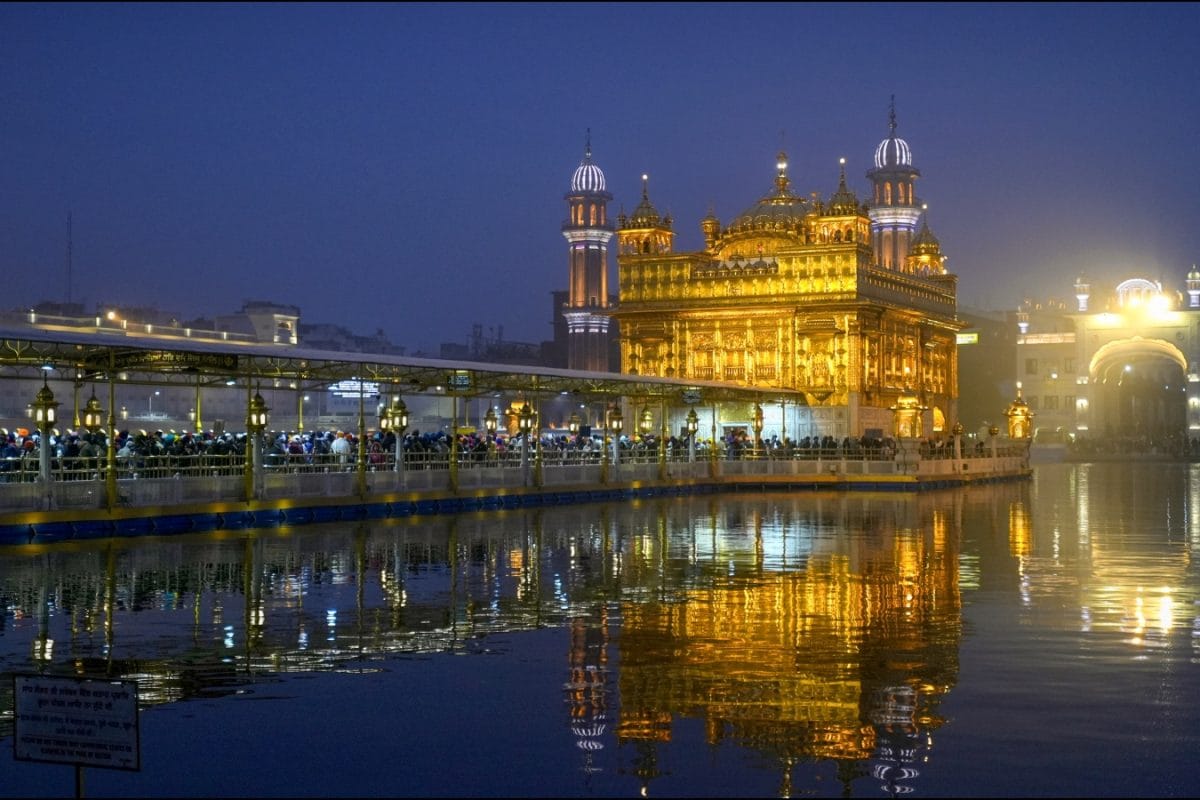

The Aam Aadmi Party (AAP) government in Punjab has recently drawn sharp criticism from the Shiromani Gurdwara Parbandhak Committee (SGPC) for allegedly using an AI-generated image of the Golden Temple in an advertisement. The SGPC, the primary organization responsible for managing Gurdwaras, views this as a grave disrespect to Sikh sentiments and has demanded an immediate apology from the state government.
SGPC President Harjinder Singh Dhami has voiced strong objections, stating that the advertisement, which was issued to gather suggestions for upcoming centenary commemorations, inappropriately altered the image of the Golden Temple using computer-generated techniques. Dhami emphasized that Sri Harmandar Sahib, the Golden Temple, holds immense spiritual significance for Sikhs worldwide, and its sacred image is deeply revered. He further added that the use of a distorted, AI-generated image not only disrespects Sikh beliefs but also attempts to diminish the spiritual aura of the revered shrine.
Dhami pointed out that despite the abundance of authentic images of the Golden Temple readily available, the government chose to use a distorted version created through artificial intelligence, which he found "deeply painful". He has called on the Punjab government to provide a clear explanation for this decision and issue an immediate apology for the offense caused.
The SGPC president also clarified that the responsibility of organizing centenary events lies primarily with the Sikh body itself. He stated that the government's role should be to support development in cities associated with the Gurus, improve infrastructure, and collaborate with the SGPC to appropriately establish commemorative memorials.
This incident is not the first time the AAP government has faced criticism regarding matters related to Sikh religious sentiments. Previously, the SGPC expressed strong resentment towards the Union Ministry of Information and Broadcasting for releasing AI-generated videos depicting individuals with uncovered heads and shorn hair playing musical instruments at the Golden Temple's holy tank. Following the SGPC's intervention, the ministry removed the videos and assured that such content would not be released in the future.
In 2016, the AAP also faced backlash for using an image of the Golden Temple on the cover of its 'Youth Manifesto' with the party's election symbol superimposed on it. This was seen as desecration, leading to public outcry and an eventual apology from the party.
Beyond these specific incidents, the AAP government in Punjab has faced broader criticism regarding its handling of sensitive issues and its expenditure on publicity. The Punjab and Haryana High Court has previously rebuked the government for prioritizing advertising and new police vehicles over essential services like modernizing forensic science laboratories, especially given the state's financial challenges and high debt.
Moreover, the government has been criticized for installing plaques bearing the names of political figures for even minor projects like school restroom repairs, drawing accusations of misusing taxpayer money for self-promotion.
These controversies highlight the delicate balance between governance, public image, and religious sentiments, particularly in a state like Punjab with a rich and complex history. The AAP government's actions are under constant scrutiny, and any perceived disrespect or mismanagement can quickly lead to public outcry and political backlash. The incident involving the AI image of the Golden Temple underscores the need for greater sensitivity and careful consideration when dealing with matters of religious importance.